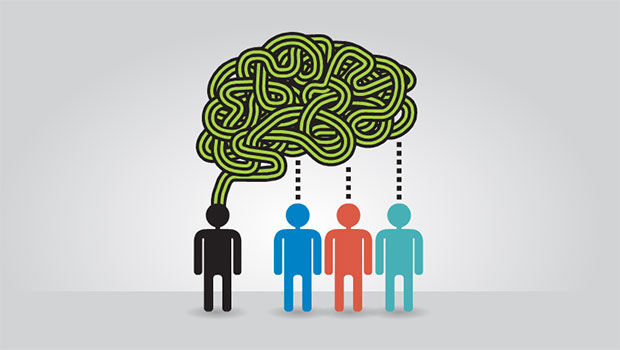This takes on a post I wrote several weeks ago, that spoke about four themes that will (and not five) predominate learning in the future. As we prepare to iterate development of Upside2Go, we will need to start figuring out what sort of features our users (learners, managers, administrators) would really like from a mobile LMS. While our current system offers some cool features, we must look further into the future.
This is where the rubber meets the road, by dreaming up features we invent the mLearning systems future right here. Taking the trends I’ve mentioned before, and the huge increase in persistent internet connection personal computing devices, I feel there need likely be three key themes around which the features would coalesce. (this discounts our current feature set)
Disclaimer: These are just my personal and casual thoughts on the evolving nature of the product; it is no promise that such features will exist in the next version of Upside2Go, and do not represent Upside Learning’s point of view or future plan of action in anyway. Take with a liberal pinch of salt please.
Social/Collaborative – Offering tools that mimic social media/network software will be one obvious theme. While Upside2Go already includes features that support sharing and interactions around shared media, I’d want the social flavor to run deeper. I’d hazard a guess doing that first involves building in a +1 or Like type of interaction for every content element that is user-generated. Second, providing an easy to use interface with clear push/pull/sync of user-generated content to individual devices. Third, provide metrics in real-time to administrators and managers; simple enough would be topic/keyword trends, hot conversations, levels of user contribution, etc. From an individual’s standpoint, their ‘reputation’ becomes important as the contributory and emergent nature of the system becomes apparent. From the organization’s perspective aides identification and establishes clearly from data the ‘knowledge leaders’, ‘lead contributors’, ‘participants’, ‘searchers’, ‘consumers’, ‘observers’ and ‘passives’. For administrators/managers robust analysis tools for social network and generated content analysis will provide a truer picture of the ‘knowledge state’ of the organization than an LMS could ever hope to represent. Learning is about content and bums-in-seats? Yes to an extent, but that’s such a last century paradigm. Knowing what we know now – that learning is intensely social, we must provide even better tools to facilitate the communication and interaction around topics of interest in the workplace. The ability for managers/administrators to identify the ‘themes, sentiments and connections’ that run through the conversations will be key.
Semantic – while most of the features Upside2Go offers are in the realm of Web 2.0 services, we see that there is scope for slowly bringing in Web 3.0 technologies. By that I mean the inclusion of very basic semantic web technologies. Perhaps the use of a RDF-based data model to catalog content being generated and added to the system. It might include elements/data containers such as ‘user’ ‘learner’ ‘content’, etc. An element such as user might contain data like: learner preferences, history of learning activities, learner behavior, certification data, etc. Integrating with the social/collaboration theme, perhaps we should consider adding basic user-configurable semantic agents that can trawl the conversation streams looking for what ‘interests’ the user and alerting them to the correct content/user. On the other hand, it’s important to understand that cataloging/tagging content/users on the systems requires a different set of tools. I envisage two primarily that would add value; the first would be an ontology search/verify/suggest tool. This type of interface is required when content needs to be added to the system. Secondly, there would need to be some sort of ontology authoring/modification tool to allow for certain classes of users to create new ontologies relevant to the need at the time. Such a constantly evolving meta-data framework provides many avenues for ‘content discovery’. Shared data, available as streams formatted in RDF would allow individual users to create their own learning applications; eventually there will be a widget-ization of learning. Resourceful individuals in capable systems will start to deliver mash-up applications rather than learning content. The move away from content shouldn’t be surprising as the amount of user generated content on well-populated and active networks will be gigantic to say the least. Would it make sense to add more of the same thing to the network, it makes more sense to aggregate, qualify, (in the sense of quality, veracity, provenance) and then distribute existing content – which brings me to ‘curation’ another theme I discuss in this blog-post. The idea that we could actually develop systems that mine ‘meaning’ and ‘knowledge’ from the routine life-streams of hundreds of individuals is something that fascinates me, it would offer a tool for learning the sort never seen before. We should strive to provide an eco-system that can make manipulation of these data-feeds possible. It is VERY important that this data be truly free inwards and outwards, allowing individuals to take their learning history, content and applications with them from one workplace to another. Can we truly look forward to the day when there truly is an application/web service to facilitate or assist every sort of learning?
Curation – With systems going from top-down content approaches to parallel and concurrent user generation of content, the sheer volume of content would be something the administrators/managers will have to deal with. Future versions of Upside2Go will need to offer tools that let users ‘curate’ content. These could be as simple as a notification/alert system when the social system trends topics or sees moderate/high activity around certain ‘keywords’, allowing the moderation of topic discussions, comments etc., also important will be the moderation of user-generated content. Other curation tools to consider would be real-time search of the various data streams that are part of the system. The ability to aggregate varied content sources, media and applications into ‘publications’ for general distribution. The ability to create braids of varied content types and data streams to provide meaningful experiences. Perhaps even to actually package these so they tell ‘stories’. Stories when recounted recreate and allow users to have a similar experience.














